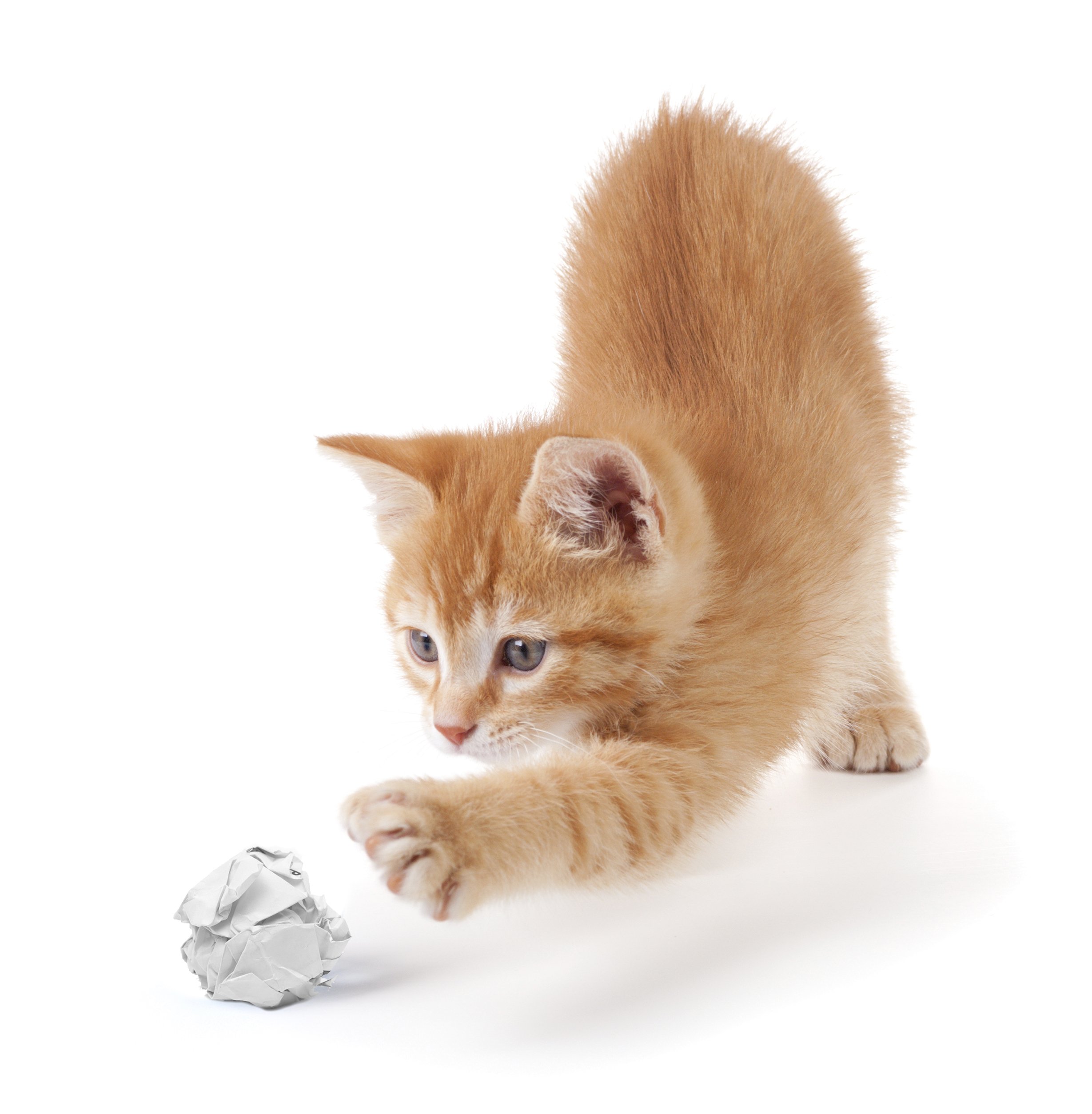DIY at Home Pet Enrichment
We understand that providing your pet with mental and physical stimulation during the winter months can be tough. Just like us, pets can feel pent up while spending more time at home than usual, particularly those used to active and social settings. Encouraging mental enrichment can help prevent destructive behaviors from boredom and future separation anxiety once their humans get back to their normal social/work schedule. To help, we’ve offered some DIY enrichment options and interviewed our own Dr. Andrew Bean.
A great way to keep your pet from being under-stimulated during this time is by adding more mental stimulation to their day. Like us, they don’t need to be entertained every second of the day, but our goal is to provide enough activity that they feel content. This applies whether you’re home with them all day or if your time with them is more limited. Mental enrichment activities prevent your pet from potentially developing separation anxiety and other behavioral issues. It also conditions pets to positively associate time away from their owner.
Here are some DIY mental enrichment activities that you can do with most household items!
Note: All pets have different ideas about what is ingestible. When introducing them to a new toy or activity, keep an eye on things to make sure they exhibiting safe play behaviors. If it looks like they’d rather eat it, consider alternative options.
Box Maze Obstacle Course
Most of us have empty boxes around the house. Whether you’re hanging onto them for moving day or you just can’t muster the energy to bring them out to the recycling, you can re-purpose them for an indoor obstacle course for your pet! Break down the boxes and connect them to make a maze. You can place treats or toys along the way to encourage your pet to sniff through the maze. This mental stimulation allows your pet to “hunt” for the treat at the end of the tunnel.
Hide the Treat
Also known as nosework. Your pet has many natural talents and a keen sense of smell is up there on the list. Hide the treat is a great way to provide both physical and mental stimulation while bonding with your pet. This fun and simple activity allows your pet to feel like they have a job to do which boosts their confidence and overall quality of life. All you need is your pet’s favorite treat and their undivided attention. Simply have your pet sit in a separate room while you hide the treat in a different area of the home. Give a verbal signal to your pet (“Go find it” or “Seek,”) to indicate they can begin searching for the hidden treat. They will use their sense of smell to find the treat and of course, get to enjoy the reward once they do!
Puzzles
They’re just like us! A puzzle is a great way to get those gears turning during moments of understimulation or anxiety. The best part is that pet parents can make a puzzle out of almost anything that’s lying around the house. Start with an old muffin tin. Put some treats in a few of the muffin cups. Use a pet-friendly ball or toy to fill all of the muffin cups and hide the treats. Let your pet sniff out which cups have treats in them and figure out how to empty the tin to get to them.
Frozen Treats
Giving your pet frozen treats is a great two-in-one example of enrichment. Your pet has to work for the treat before they get to enjoy it. Some examples of nutritious treats that can be frozen include peanut butter, pumpkin puree or wet food. You can use a Kong to fill with your preferred filling and freeze it for a few hours. Ask your pet to demonstrate obedience (sit, for example,) and then they can have the treat. This is a simple and cost-effective way to keep your pet occupied while giving them a meaningful task to do. Remember to never leave your pet unsupervised with their frozen treat.
Broomstick Agility
For this one, all you’ll need is a stack of books and a broomstick. You and your pet can try out agility without investing a ton of time, energy and money. This is an effective source of enrichment for pets that are high-energy and need a little extra physical exercise to be stimulated properly. Stack your books in two, equal-sized towers and place the broomstick on top (similar to a human version of limbo.) Use a treat or toy to entice your pet to jump over or under the broomstick. Be sure to adjust the height of the mechanism to the liking of your pet. You never want to make your pet jump something that is too high for them. This bonding experience allows your pet to really focus on navigating the course while getting some indoor physical exercise in a smaller space.
DIY Snuffle Mats
Snuffle mats allow owners to slow-feed their pet while providing tons of mental stimulation. Snuffle mats, which are meant to mimic grass, are made out of a mat with fabric fringe tied through it. They encourage your pet to use their instincts to hunt or sniff out their food. Snuffle mats let pets hone in on those primal instincts and provide a much more fulfilling dining experience. To make a snuffle mat at home, all you’ll need is a bath mat or a rubber mat that has pre-existing holes in it, fabric and scissors. Using your scissors, cut enough fabric strips to fill your mat. The strips should be about 3” by 11” long. From there, you can poke holes along the entire length of your mat if it doesn’t already have them. Take each fabric piece and string it through each hole, tying it together once it’s through. Repeat this along the length of the mat until every hole has a piece of fabric tied through it. Sprinkle dry kibble across the mat making sure your pet has to really sniff it out to get to it. Be sure to monitor your pet while using the snuffle mat. Never leave your pet alone with the snuffle mat to be sure they don’t confuse the fabric for food and accidentally ingest some. If they have a history of eating fabric toys or socks—cross this off your list.
Basic Training
Take some time to brush up on those basic skills and tricks like sit, stay, lay-down, or high five (the possibilities are endless.) This is a very mentally stimulating activity not only for your pet, but for you. They also love the attention. Using positive reinforcement, have your pet demonstrate basic obedience during your down time. Reward your pet with their favorite treat each time they correctly perform the task you ask them to. This quick and easy relationship-building activity will keep your pet occupied and prepare them to be at their best once the stay-at-home order is lifted. Check out Instinct Dog Behavior Training for free online courses!
Bubbles
Spring is here and our options for outdoor activities are limited given the stay-at-home order. A great way to break up the mundane is do a bit of bubble chasing! Bubbles are a cost-effective, no clean up way to allow your pet to stay active with a little fun along the way. Whether it’s for a cat or a dog, these non-toxic toys can provide enrichment both indoors or outdoors.
One Man’s Trash
Don’t feel the need to order a bunch of new puzzles, slow feeders and enrichment toys for your pet- there are already tons around the house. Is your recycling piling up? Think twice about getting rid of that empty water bottle or paper towel roll— these can easily be repurposed into a slow feeder or puzzle toy for both dogs and cats. Check out Food Puzzles For Cats for some more cat-specific ideas.
Preparing for the Future
When the warm weather returns, we will likely be spending more time away from the home and our pets. “Symptoms of separation anxiety can include destructive behavior, pacing or whining. We’ve been recommending giving alone time in a small room or crate; starting at 10-20 minute increments and increasing over time,” says BLVD Vet Lakeview East Medical Director, Dr. Bean.
To prevent your pet from developing separation anxiety, we also suggest maintaining as much of a normal routine as possible. We recommend letting your pup stay home occasionally while you step out to run an errand or take out the trash. This prepares them to transition smoothly into spending more time alone and will help maintain their confidence that just because you leave, you will be back.
Learn more about Separation Anxiety in our article with Dr. Peters!
We hope you found these tips useful and that they help you keep your pets happy and healthy! If you have any questions, don’t hesitate to ask us. As always, we’re here for you and your pets.
Sincerely,
The BLVD Team









